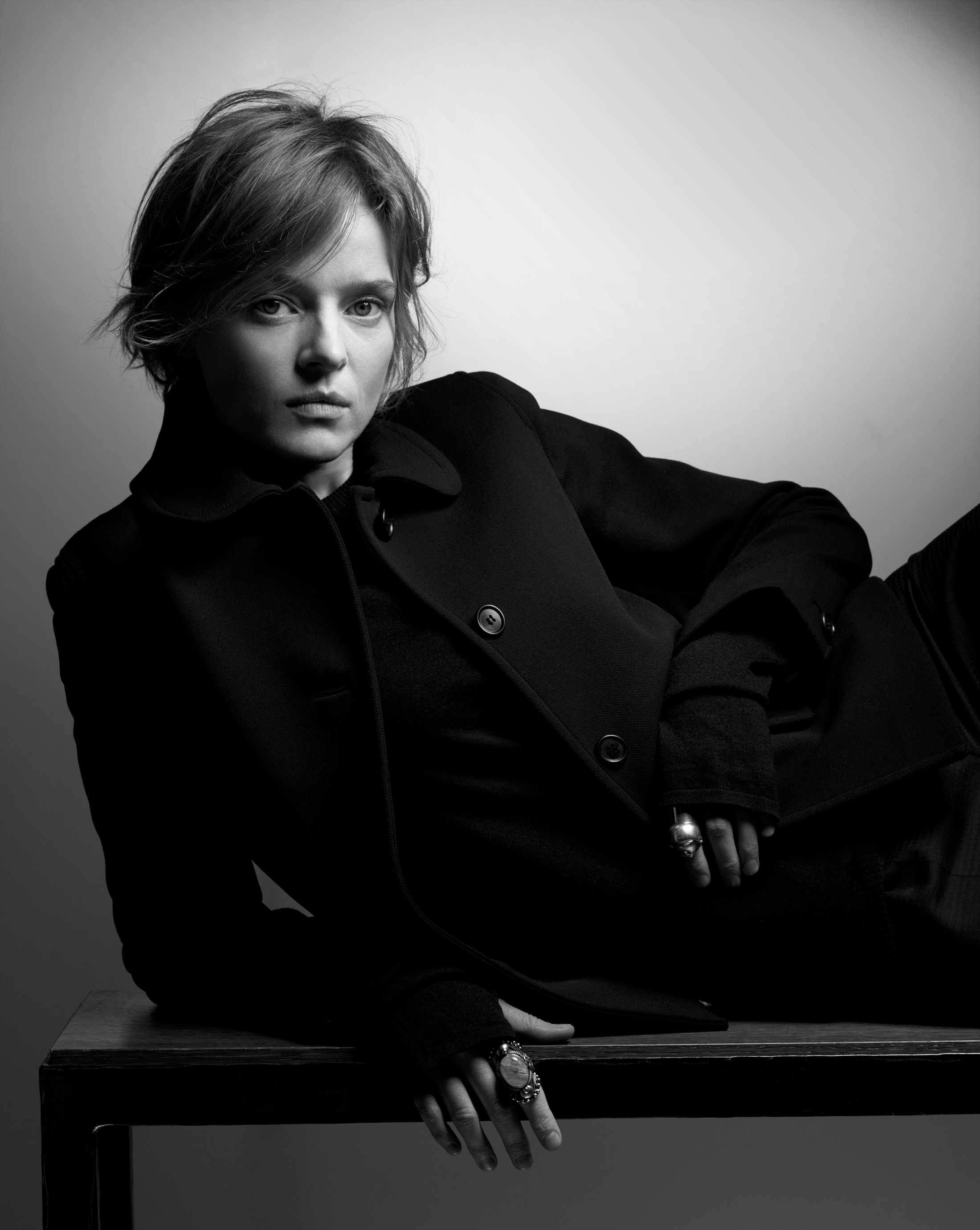In today’s fast-changing world full of start-ups either folding or impatiently waiting for their time to be bought by the highest bidder, one rarely hears of a company founded in 1936 anymore. Much less one who’s primary resource is a small group of highly skilled craftsmen who are passionate about millinery. That company is Maison Michel. Two years ago I had the insane opportunity to visit their atelier outside of Paris as part of a tour of several of Chanel’s Métiers d’Art—Maison Michel was bought by Chanel in 1997 in order to preserve their craft and educate a new generation of milliners. Last month, another amazing opportunity came; a chance to interview Priscilla Royer—the house’s creative director since 2015—and to take a few of my favorite hats from Maison Michel’s Spring 2019 collection to Panama for a little photo shoot over the New Year holiday. Priscilla and I met one morning at the Greenwich Hotel in New York to talk about her career, her process and her latest innovative creation for Maison Michel; The Hat On The Go, also known as “Charles” or “Teresa”—two foldable hats that can be wrapped around themselves, made with naturally white and flexible Japanese straw. For Priscilla, the person under the hat is what’s most important about her job. But here, a peak into the mind behind them reveals an authentic curiosity for human nature, respect and camaraderie for her team and their craft, and a passion for modernity and practicality.
In Conversation with Priscilla Royer of Maison Michel
January 28, 2019
IN Fashion
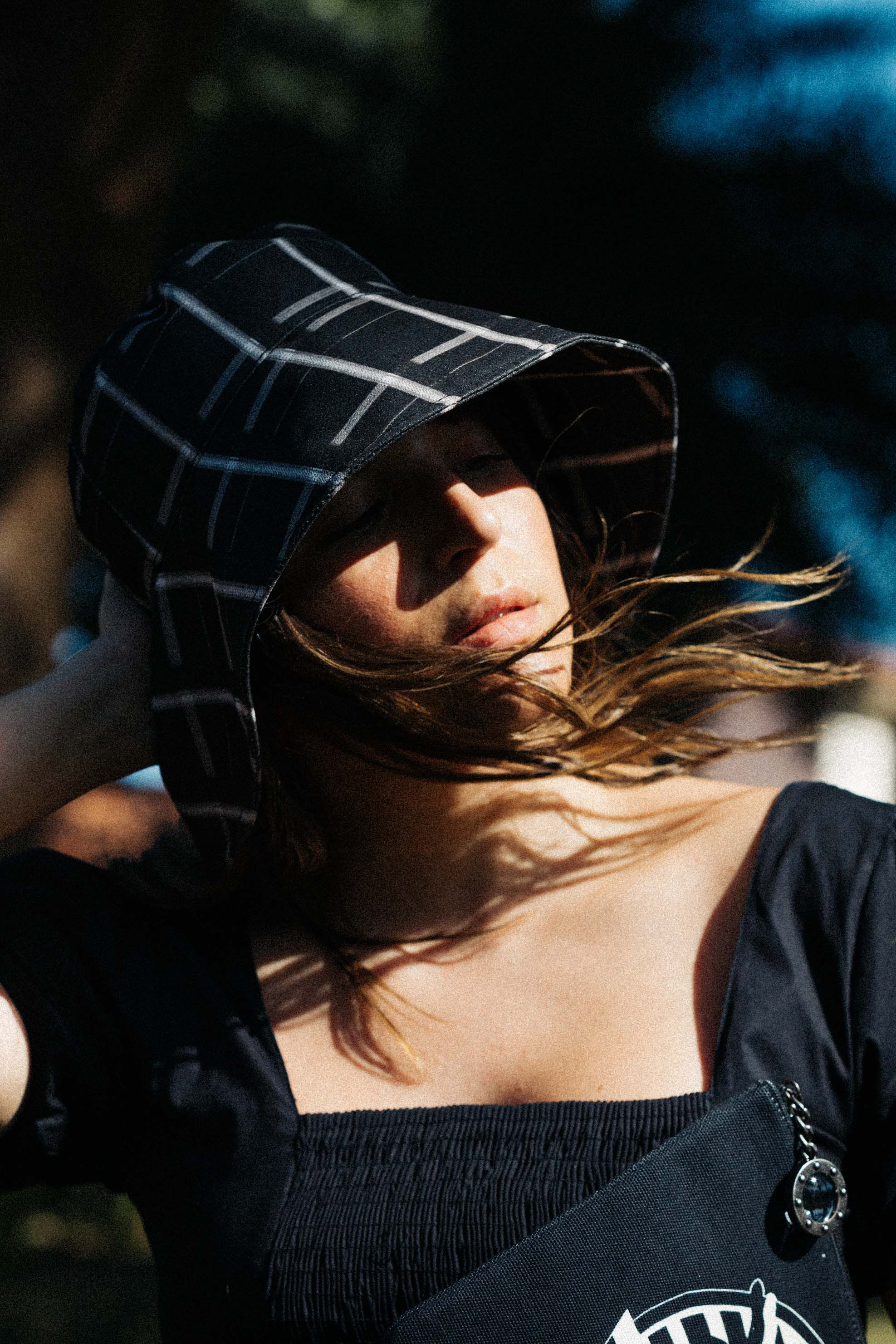
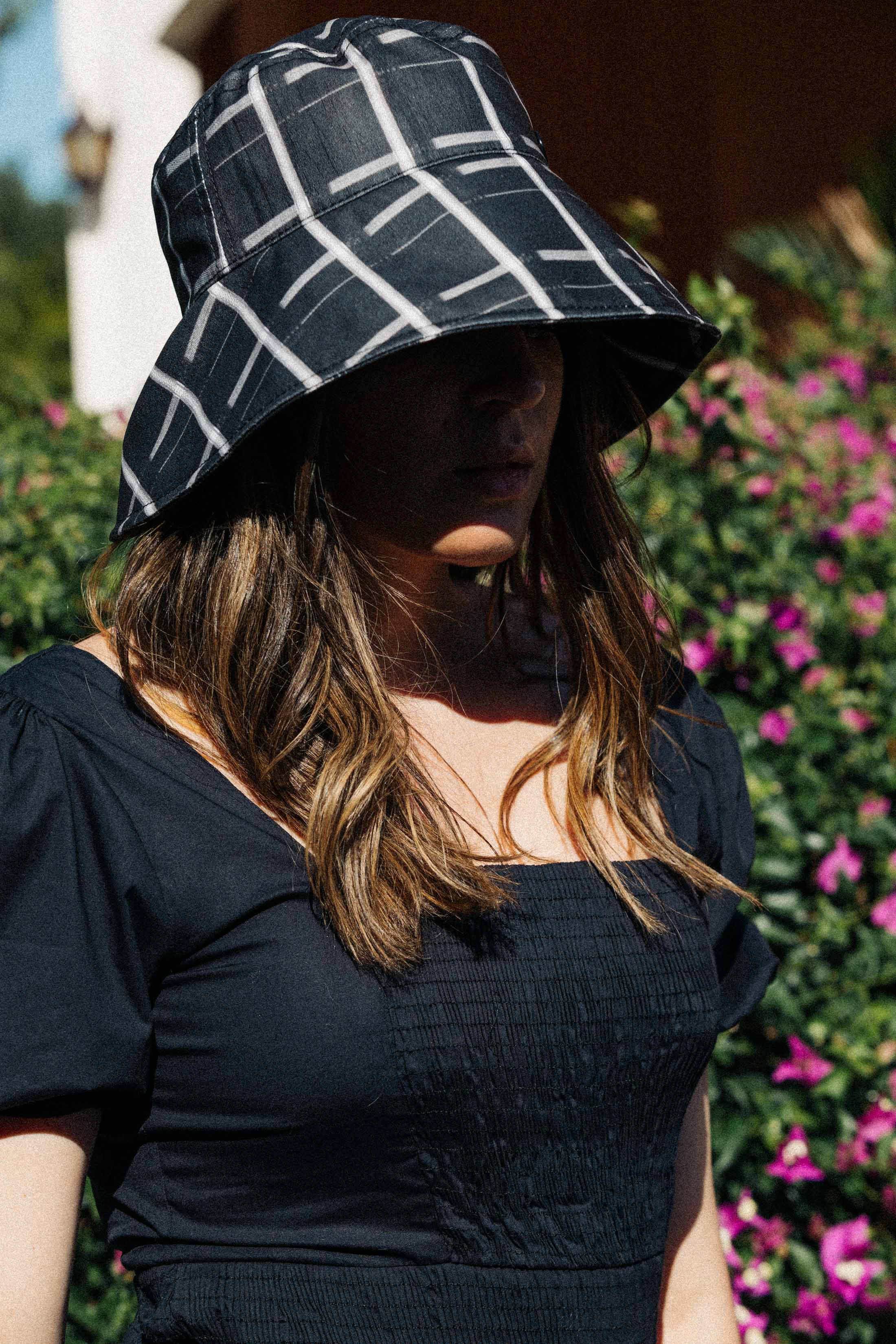
Although you studied fashion, hats are a very specific trade. Were you well versed in the art of hat-making when you were appointed creative director of Maison Michel?
I knew a little bit, but not that much. To be honest, the experts are the ones in the atelier, they know everything. I’m just here to bring what they might need to pull the hat in a modern situation because hats tend to be a little outdated—when it’s very rigid you don’t know where to place it or you don’t know how to travel with it, so I’m just here to make sure the hats still exist, in a way. We work on the flexibility of the materials—so the Hat On The Go is [made with] rollable straw. We work with non traditional shapes or use of color, so you have something to play with—even though it’s hats. I want to place [hats] on a more “fashion” accessory rather than a “traditional” accessory [level].
Would you consider the atelier to be more like the engineers and you’re the architect, in a sense?
Yes, you could say that. When I arrived, I knew a little bit [about hats], I knew it from the atelier already because I had worked with them in the past for different projects. We know how to communicate with each other to be sure an idea becomes something very realistic. I know how to think and how to create different things, I know all the steps, I know roughly how long it would take and things like that, or how much it would cost because of the timing and the choice of material. But they are the ones telling me “be careful if you use this fabric because it’s too light,” [for example]. We talk a lot, it’s a continuing process. It’s not like I tell them what to do, it’s more of a conversation.
Were you intimidated to take the job?
Not really. I was really honored to be part of—to have such an important position in this group—I felt immediately excited and inspired, really. I couldn’t wait to start, I couldn’t wait to walk around the atelier and all the materials and all the people. I was like a little girl in a candy shop! It was more the excitement than the fear of failing or anything. I play a lot and it’s still very fun for me to do it.
What is the most challenging aspect of creating a hat?
For me it’s to think about the person who’s gonna wear it. When I make a hat I think about different kinds of archetypes—different personalities or physical qualities. If the face will be round or angular, will the hair be blonde, will it be worn by a boy or girl—this style, that style [for example]. That’s super interesting to me. The main thing really is to think about the personality—a hat without a personality is just a hat. A hat becomes a message you want to give to other people.
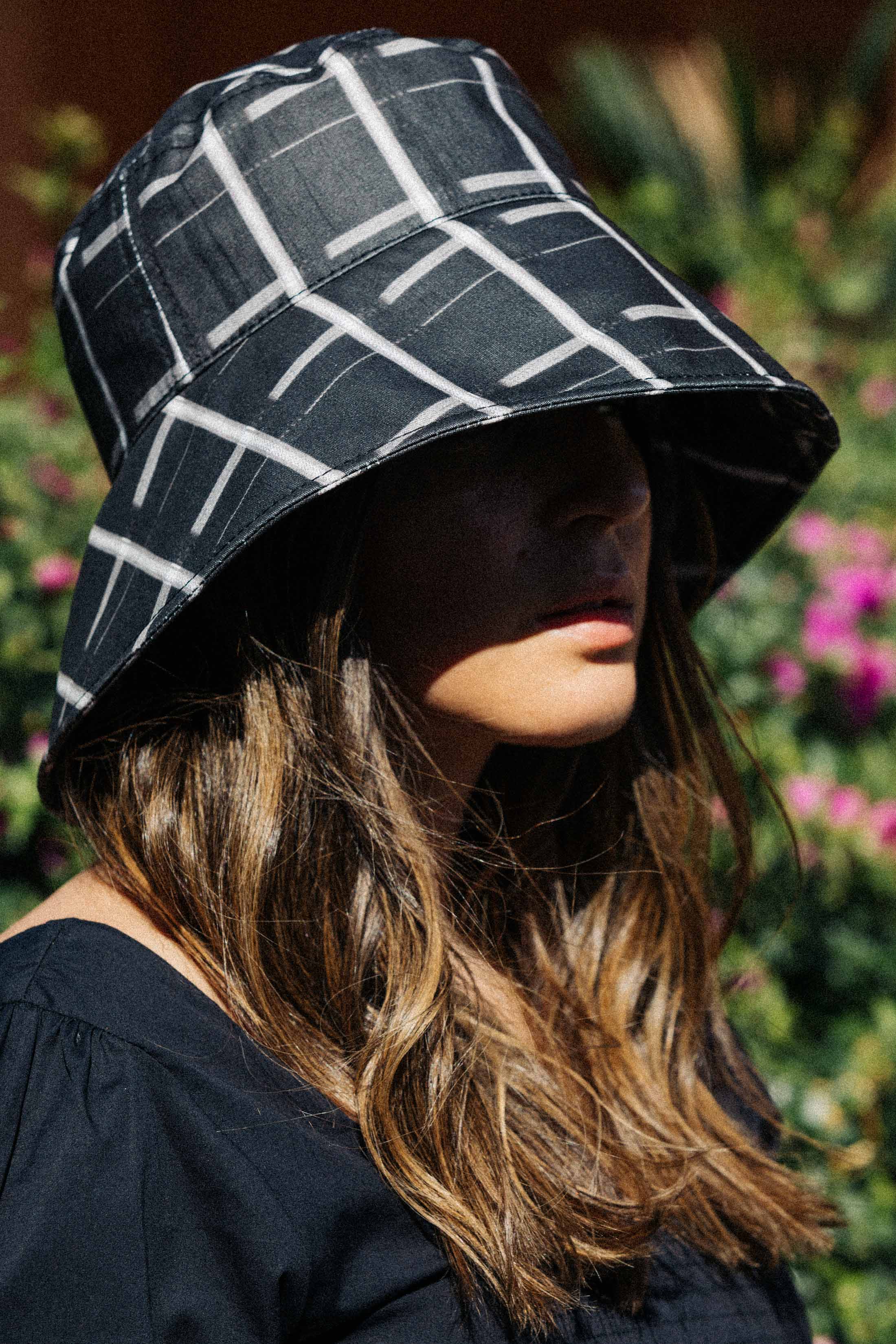
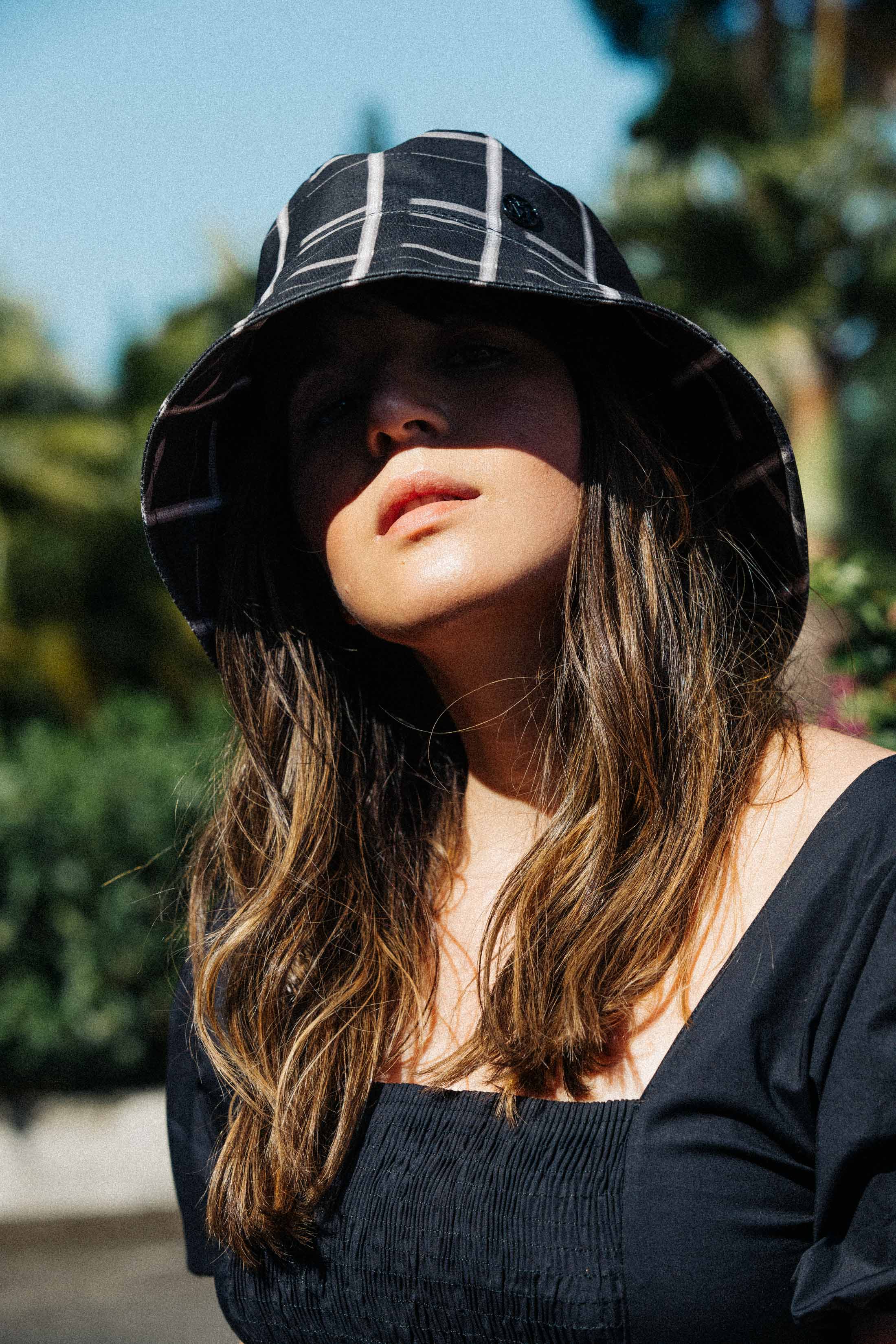
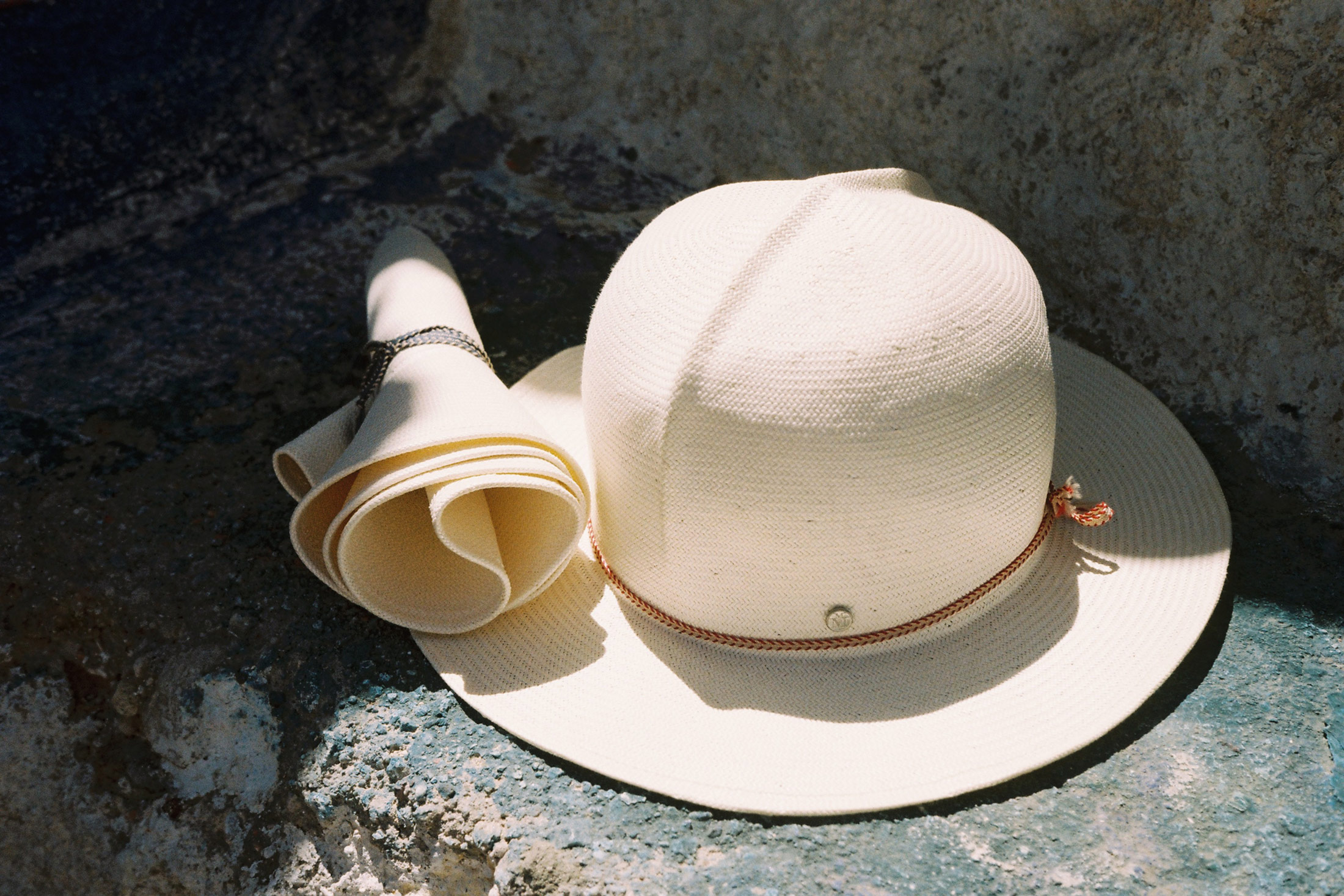
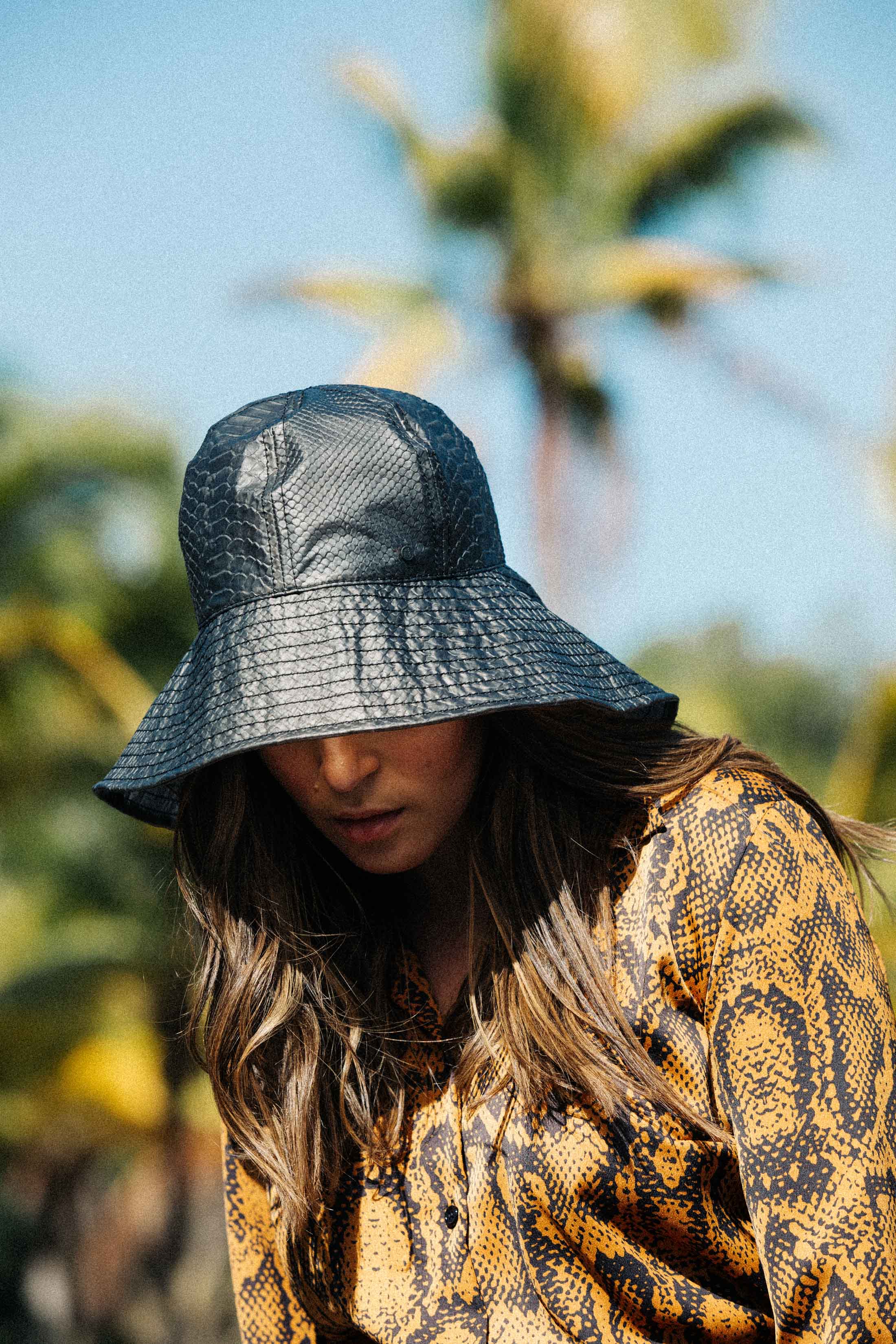
Can you describe your creative process?
It’s very animal-like. I get very territorial. First, I need to look around and observe a lot what’s happening everywhere. I become very transparent and I observe people on the street. I watch a lot of movies, I read a lot of magazines, but I never stop on something very specific. I just feed on images and visuals and words and things like that. Then, I need to collect materials and colors which I then leave for a long time in the same room that I rather no one enter [into] because it’s a real mess. That’s the process. Then, at some point, we have almost no time before the briefing to the team and it all falls into place. It’s animal in the sense that I need to feel, I need to smell, I need to look around. I use all my senses.
Is there an archive that you also take from?
Yes, a little bit. There are more than 4,000 wooden shapes at the atelier. Whenever I have something in mind we first look in the archive if we have the right wooden shape. If we have it, it’s great—money-saving—if not we just make it, we start a new one.
Have you made many new shapes since you started?
There’s always one or two new shapes per season. Right now there’s a lot of new shapes since I arrived. They tend to mix really well with the traditional shapes and the shapes that were working well for Maison Michel, which I like to keep because they are the core of Maison Michel and part of the DNA of the brand now. It’s important to have them as well. It all works in a very organic way.
Can you give me an example of a traditional shape and a new shape in the Spring 2019 collection?
The Virginie shape, of course. It’s one of the most recognizable pieces of Maison Michel because the hat has an irregular crown, not symmetrical. So it makes it very recognizable, and very chic at the same time. The plus, the mega plus, is that it fits everyone—female, male, anyone who says “I’m not a hat person;” it fits everyone. We’re very, very happy about that! So that’s one; it’s a classic fedora, in a way. And lately, what’s been working really well is the Souna—a bucket hat hybrid with a cloche hat.
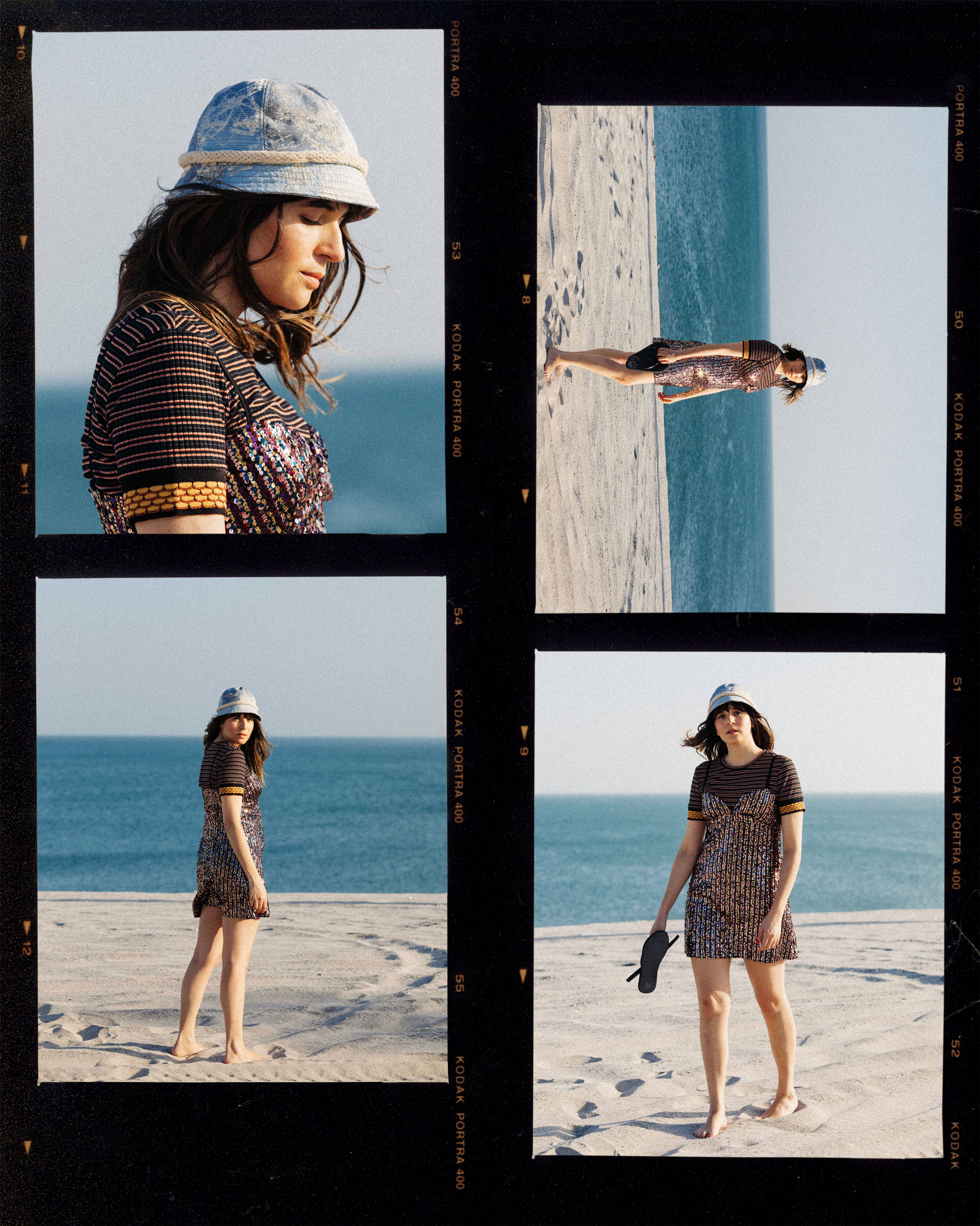
Do you ever work with computers or is everything at Maison Michel completely handmade? From concept sketches, to prints, to the end result.
There’s a traditional way of working [at Maison Michel]. But I use Photoshop once in a while and we work with graphic designers, depending on what we need. For example, for the silk scarves we work with graphic designers to make the layouts and the prints, because I usually work with collage and things like that. I do a quick layout in Photoshop and then we send it to the graphic designer, who makes it clean or vectorizes it so it’s a little bit more neat for printing. Really, it depends, but we don’t use a lot of computers—I’m a bit lucky with that.
How has technology changed millinery today?
Technology has changed it and it hasn’t changed it, in a way. We use technology to improve some areas like the supply chain, the logistics behind all of it. But we still work with craftsmen, it’s an old craft and traditional technique. We have programs to make sure we allocate the right materials and also to keep track of the technical information and specifications of each hat, like measurements, reference of the materials and all this. The whole hat is traceable, and it’s very important for us to have that because otherwise it becomes too crafty and impossible to deal with. But in terms of the [hat-making] technique itself, we’re still using the same machine from the 1930s, so I can’t really say technology has changed our way of hat-making so far!
What do you enjoy the most about working at the atelier?
The people and what we can do.
Sometimes people wear hats to stand out, other times to hide. Do you think it’s possible to hide in a Maison Michel hat?
Of course! And thank god! It would not be a hat otherwise. You need both. You need different types of hats for different occasions. Sometimes you need it to hide your hair, sometimes you need it to hide a spot on your face and it’s super important to have that too. When you have a cap with a visor, of course you hide a little bit. But you hide with style. It gives a whole twist to your silhouette.
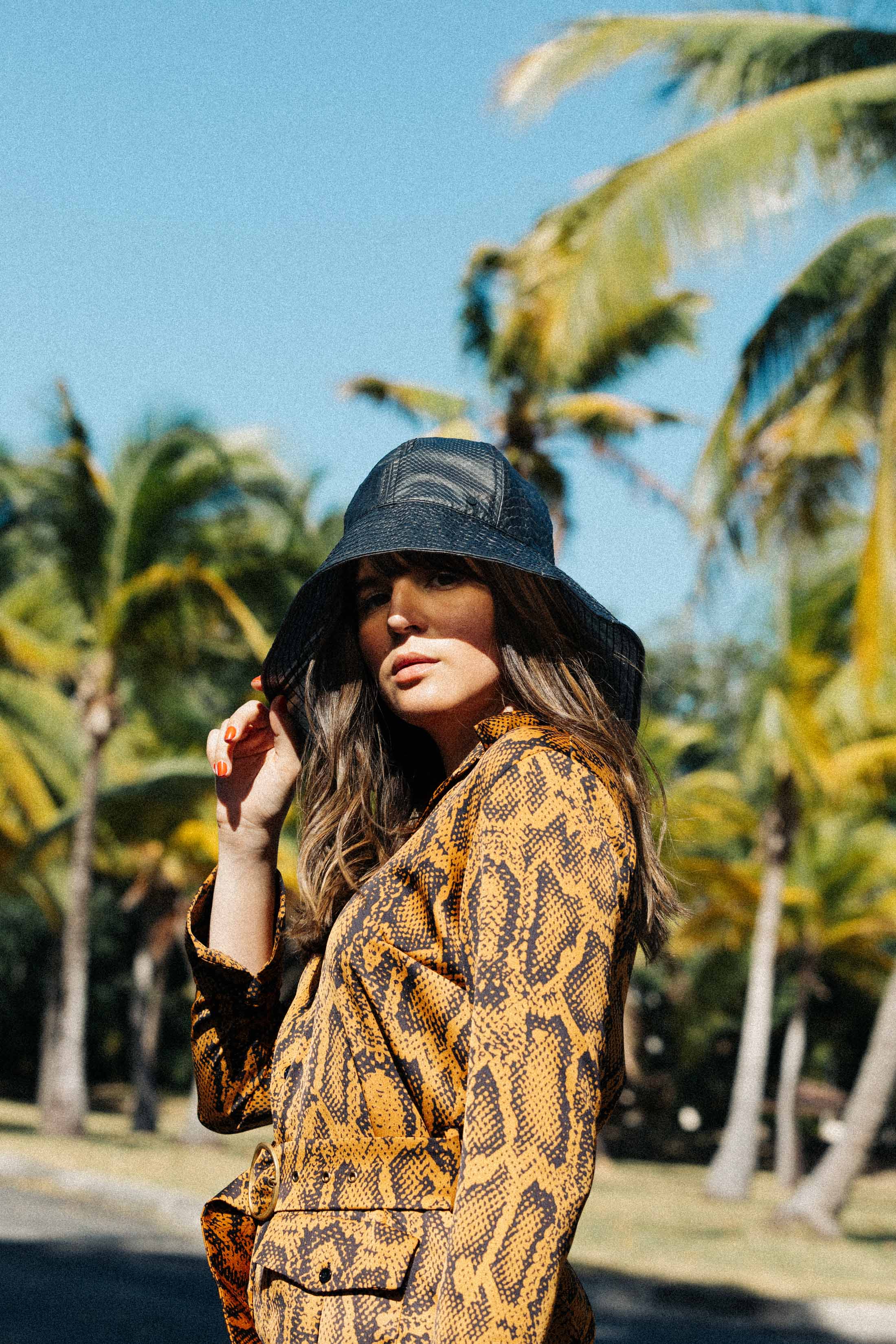
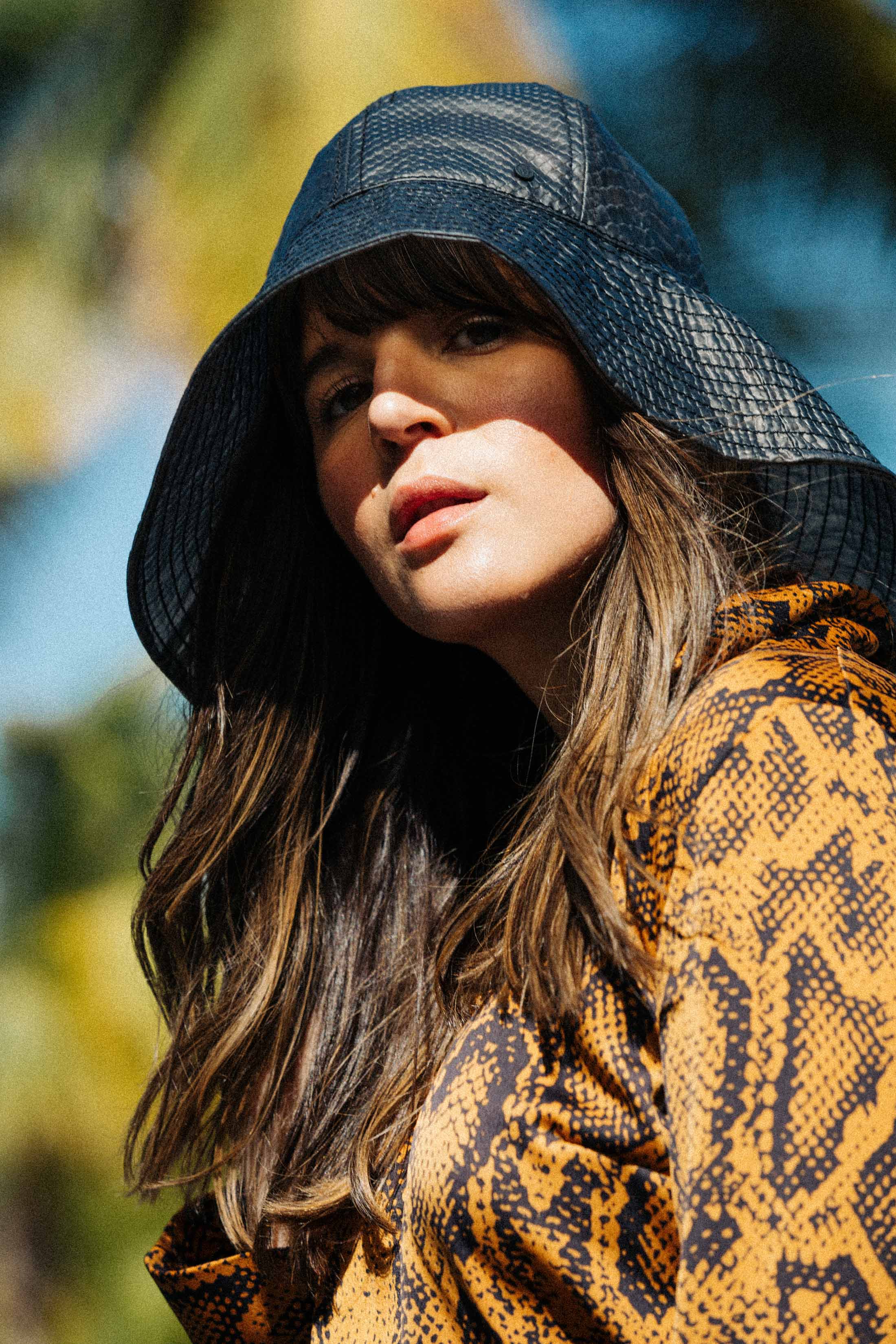

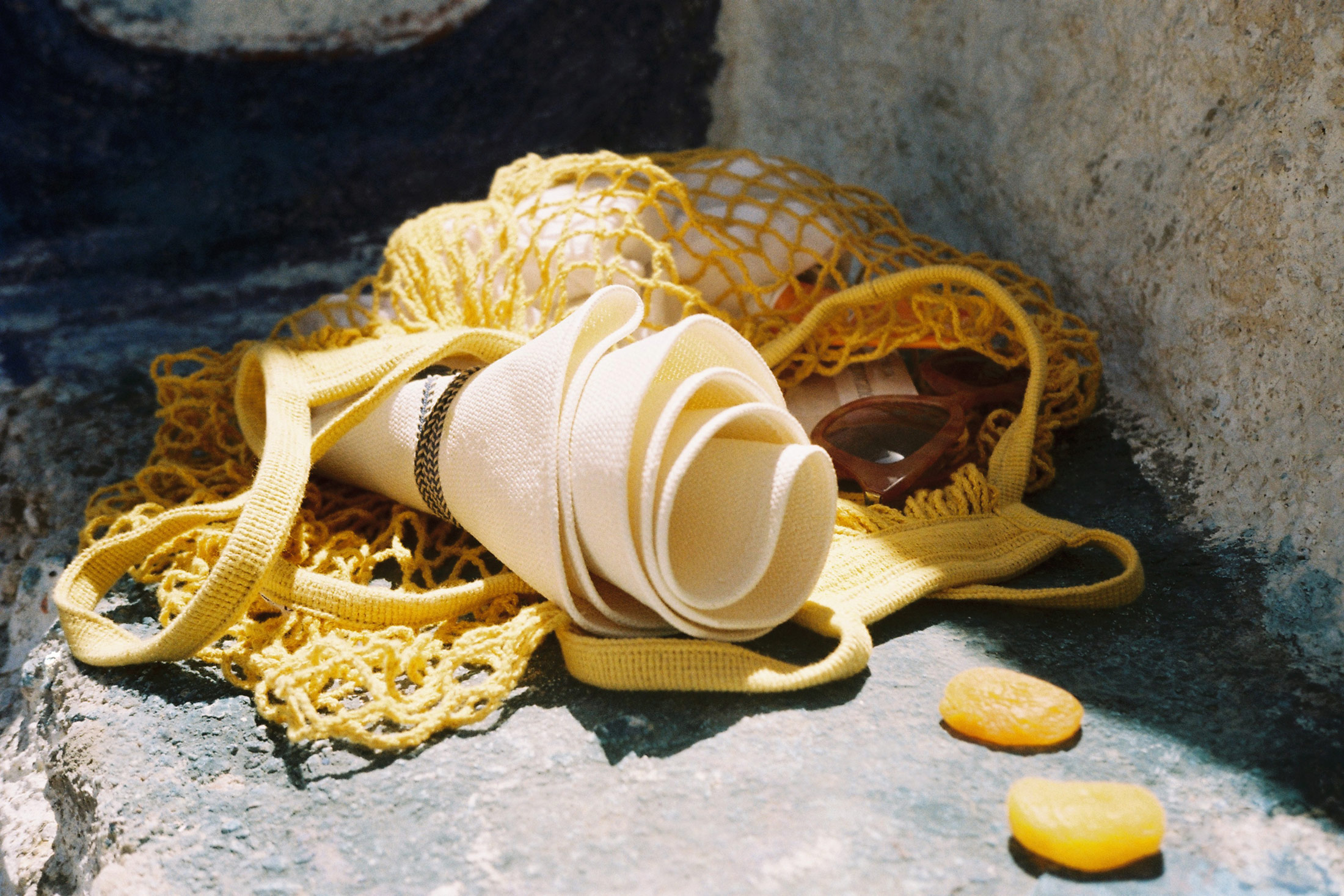
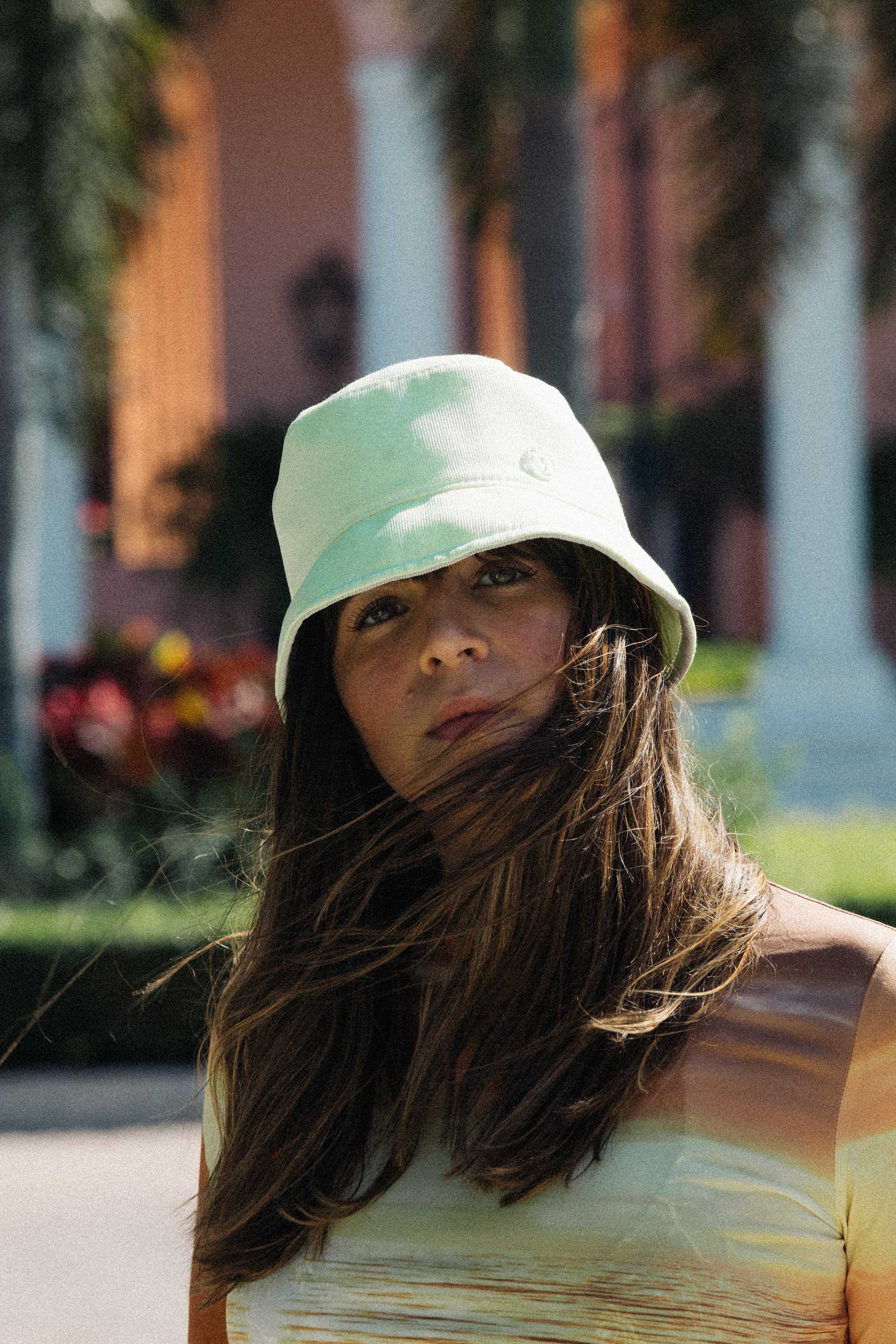
What inspired you to create The Hat On The Go?
I wanted flexibility. I hate it when you have your straw hat to go on holidays and then you don’t know where to place it, so you actually carry it on your head when you are at the airport—so not appropriate! But it’s so hard to do it any other way. Also you forget your hat everywhere, so it’s good to be able to have it in your pocket [when you’re not wearing it].
Why are they named Charles and Teresa?
Charles is one of our classic shapes, which was always called Charles. And Teresa—I don’t know, I wanted a name that ended with the letter ‘a’. It was a little bit more summery than ‘Louise’ or whatever. Teresa is quite happy! Sometimes hats are named after people in the atelier, or around the atelier that work for Maison Michel, or people that buy Maison Michel—friends and family of the house. Or when there’s a new baby in the company, we’ll name a new hat after them. Everyone’s very happy!
In the future, will you add another silhouette to The Hat On The Go?
I’d love to. We need to work on that. There’s other shapes that could be done in this material and using this technique. There will be more. We start slow; it’s good to start with two styles and see how it goes.
Where have you taken your Hat On The Go so far? Or where would you like to take it next?
I’ve taken it to Spain—to Seville. Next I will take it to the Maldives.
What culture or theme currently intrigues you?
Right now I’m very into gangsters and gangs, from all over the world. Because the [next] collection will be about gangsters—Al Capone, the Yakuzas from Japan, mobsters. It’s really fun to look at that because it can be very chic and elegant but in another part of the world it could look very different with just a headband. That’s super interesting to me.
I read that you like documentary photography. Can you mention a few of your favorite photographers?
Ah! Yes, I can name a few, but it wouldn’t be fair to the others. There are so many! There other day I was talking about Mark Bostwick—this young photographer who’s got a very poetic way of photographing. I love Jesper Haynes, he’s a friend of mine. We’ve been working on Maison Michel together for a long time. I quite like Rinko Kawauchi. She’s one of the first photographers I discovered that made me like photography a lot. I like Nick Waplington, he’s got his very own way of photographing things, there’s a lot of storytelling. The layout of his books is very nice. Bill Henson is very good with lighting. I really like the way he photographs the sky—that’s more for landscape. In terms of cultural or social [photography], I like Tom Wood. And all the old ones like Robert Frank, Bill Brandt. I love photography!
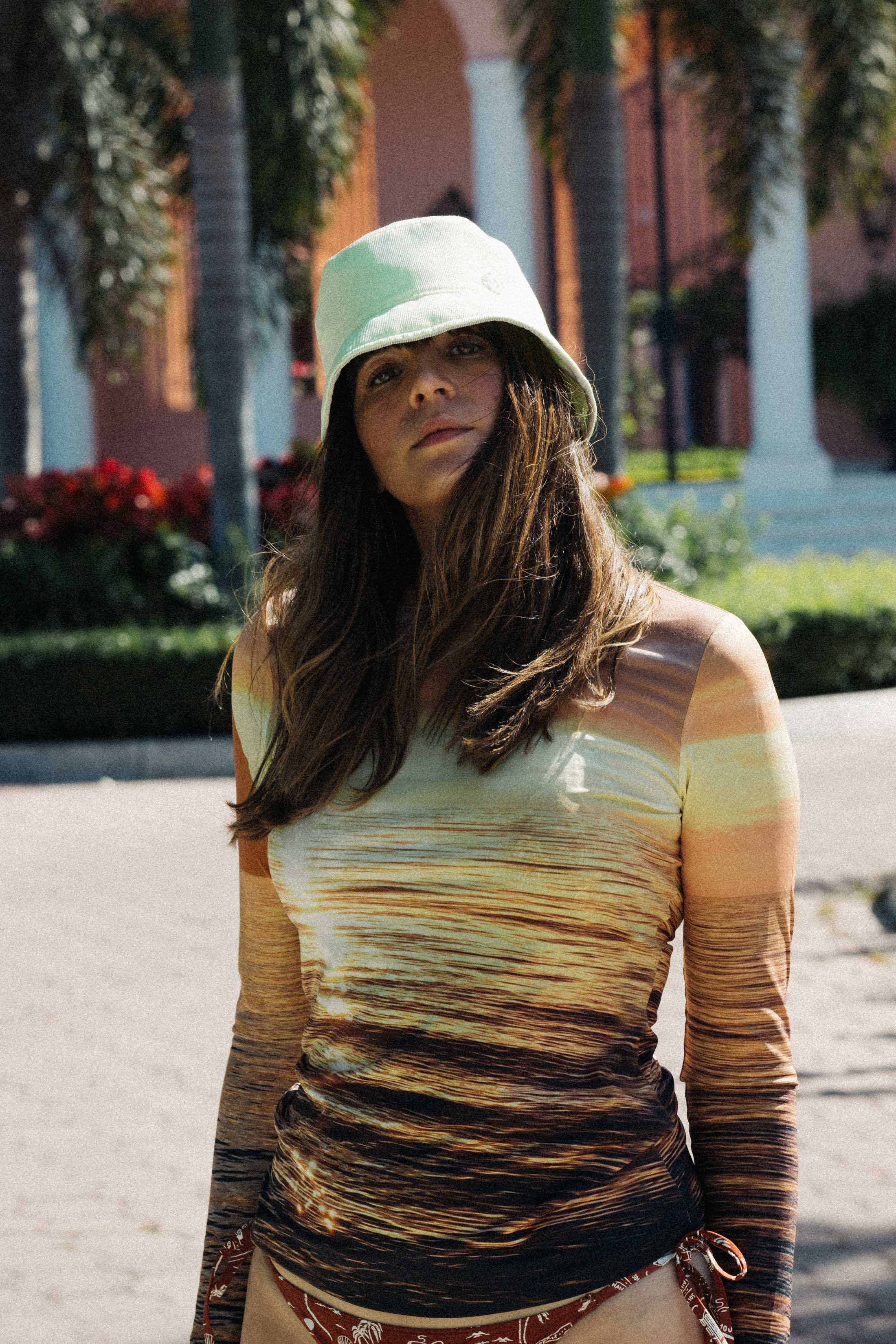

“The main thing really is to think about the personality—a hat without a personality is just a hat. A hat becomes a message you want to give to other people.”
—Priscilla Royer
